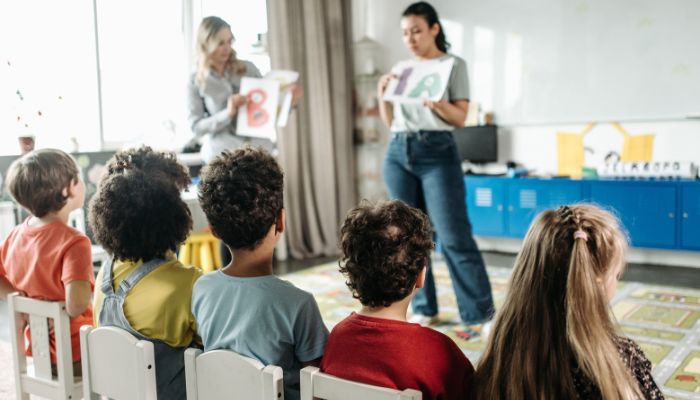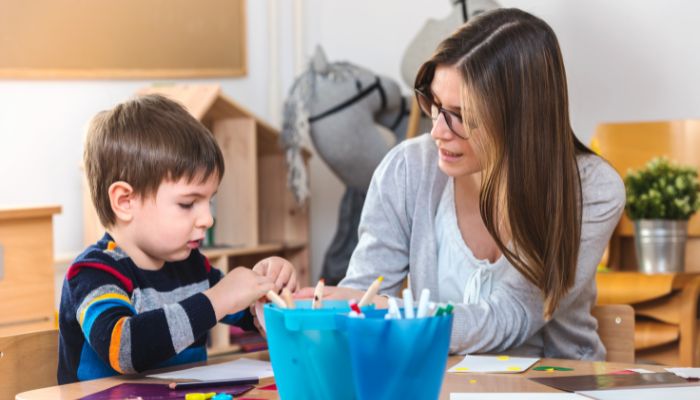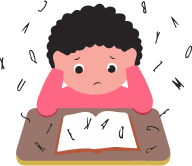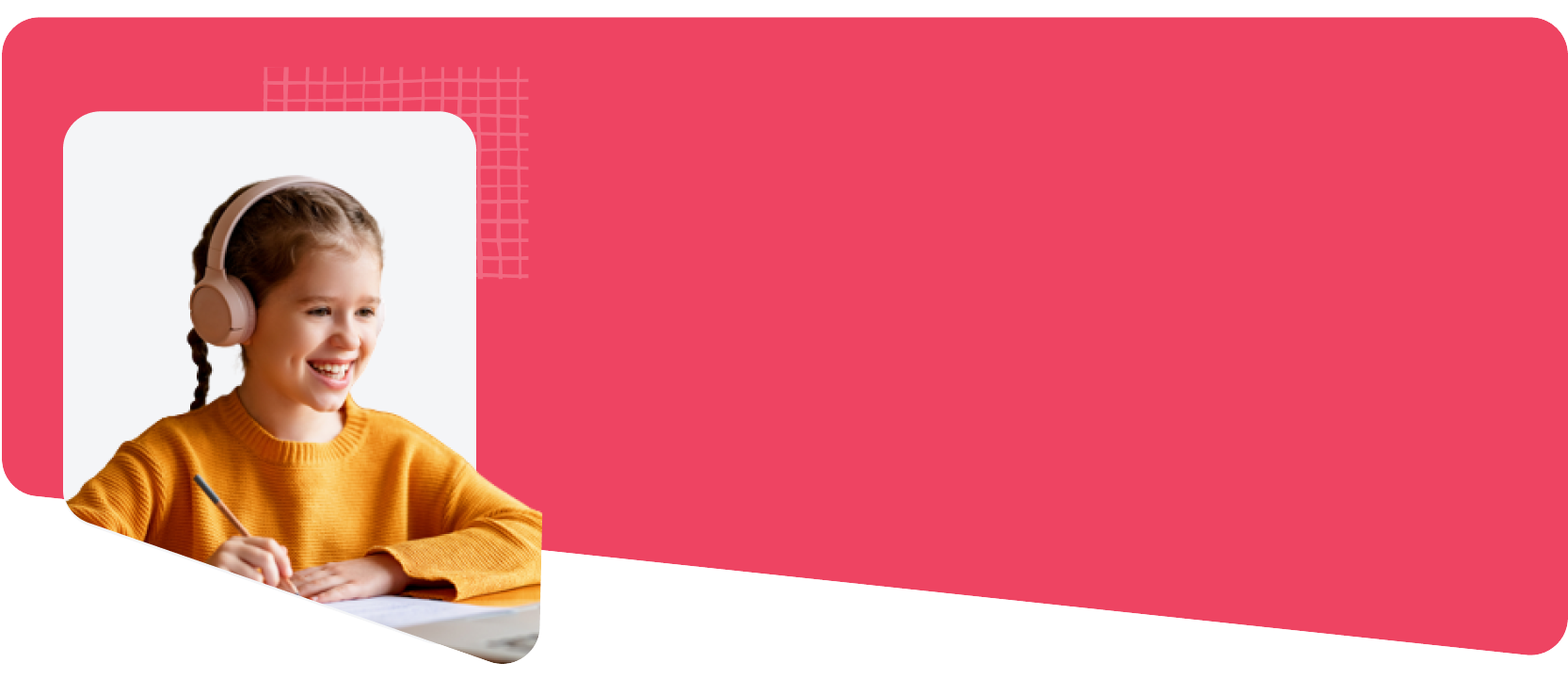Starting kindergarten is a big step, and learning to read is one of the most exciting milestones along the way. At this stage, your child begins to unlock the connection between letters, sounds, and words, forming the foundation for everything they’ll read and write in the years ahead.
If you're a parent, you're likely wondering: What should my child know by now? Are they reading at the right level? How can I help at home without making it feel like schoolwork? These are important questions, and the answers start with understanding what reading looks like in kindergarten.
This guide breaks down the expected reading level for kindergartners, common milestones, and simple, effective ways to support your child’s reading journey from home.
TL;DR
-
Kindergarten reading focuses on letter sounds, sight words, and basic comprehension, but every child progresses differently.
-
Common challenges include sound blending, sight word recall, and low reading confidence- all of which can be supported early.
-
Simple home strategies like read-aloud routines, child-led book choices, and phonics games make a big impact.
-
FunFox Readers Club offers small-group, level-based sessions that blend phonics with story engagement, guided by trained educators.
What Is the Kindergarten Reading Level?
The kindergarten reading level refers to the range of skills children typically develop as they begin their reading journey. At this stage, the focus isn’t just on reading full sentences; it’s about building the foundation that makes reading possible.
Most kindergarteners work on:
-
Recognizing letters and sounds (phonemic awareness)
-
Reading basic sight words like the, my, can, see, and go
-
Sounding out simple CVC (consonant-vowel-consonant) words, such as cat, dog, or sun
-
Understanding the meaning of a short sentence with support
By the end of kindergarten, many children can read short sentences independently, recognize 20–50 sight words, and answer basic questions about what they’ve read. However, reading abilities can vary greatly, and that’s perfectly okay.
Also read: Sentence Structure and Grammar Types
Key Reading Milestones in Kindergarten
Kindergarten is when children begin moving from letter awareness to using those letters to form meaningful language. While every child progresses at a different pace, most reach the following milestones throughout the year:
-
Letter-Sound Mastery: Children can consistently match each letter to its most common sound (e.g., B says /b/, S says /s/). This is the foundation of decoding unfamiliar words.
-
Blending and Segmenting Skills: They start combining individual sounds to form words (blending) and breaking words into sounds (segmenting). For example, blending /c/ /a/ /t/ into cat, or separating dog into /d/ /o/ /g/.
-
Sight Word Recognition: By mid-year, many children can recognize high-frequency words that don’t always follow phonetic rules. These include the, to, you, said, and look. Sight word knowledge increases reading fluency by reducing the need to decode every word.
-
Reading Predictable Texts: With support, children begin reading books that use repetitive phrases and familiar patterns, such as I see a dog. I see a cat.
-
Understanding Story Elements: They start identifying the beginning, middle, and end of a story. They also recognize basic elements like the main character and setting.
-
Visual Tracking and Page Navigation: Kids learn how to follow words from left to right and top to bottom, and understand that words are separated by spaces.
-
Comprehension Through Discussion: After reading or listening to a short story, they can answer basic questions, explain what happened, or relate it to their own experiences.
These skills reflect both decoding ability and comprehension development. While some students may master them quickly, others need consistent reinforcement in smaller steps.
Common Reading Challenges at This Stage

Not every child finds reading smooth in the beginning, and that’s completely normal. Kindergarteners are still learning how language works, and several challenges may come up along the way. Knowing what to look for helps you respond early and supportively.
-
Mixing Up Letters or Sounds: Many children confuse similar-looking letters such as b and d, or p and q. Others may mix up sounds that are phonetically close, like /m/ and /n/.
-
Struggling with Sound Blending: While they might know individual letter sounds, some children find it hard to combine them into full words. For example, they may say the sounds /s/ /u/ /n/ but not arrive at the word sun.
-
Skipping or Guessing Words: If the sentence reads The dog is big, a child might say The dog is brown simply by looking at the picture or guessing based on context. This usually happens when decoding skills are still developing.
-
Limited Word Recall: Some children struggle to remember sight words from one reading session to the next. This can slow down fluency and make them feel frustrated or unsure of themselves.
-
Avoiding Reading Out Loud: When reading feels difficult, children might avoid it altogether. Hesitation, mumbling, or giving up mid-sentence can signal a lack of reading confidence.
-
Losing Focus Quickly: Reading requires concentration, especially when children are still figuring out how letters and sounds connect. If your child drifts off during reading time, it might be because the task feels too hard or not engaging enough.
The goal isn’t to label these behaviors as problems but to recognize them as signs that your child may need extra support, smaller steps, or more encouragement.
Tips to Support Your Child’s Reading at Home
Building strong reading habits at home doesn’t mean turning your house into a classroom. The goal is to create a low-pressure environment where reading feels natural, interesting, and achievable. Here’s how you can do that effectively:
1. Set a Fixed Reading Routine
Children thrive on predictability. Choose a time when your child is relaxed, not right after a tiring activity or before screen time. For example, reading for 15 minutes after dinner or as part of the bedtime routine builds consistency. Repetition at the same time every day signals the brain to get into “reading mode.”
Also read: Understanding Simple View Of Reading Model
2. Let Your Child Choose the Book
Offering choices, even limited ones, builds ownership. Ask them, “Do you want to read about animals or trucks today?” This promotes interest and reduces resistance. If your child is excited about the story, they’re more likely to stay engaged and try sounding out unfamiliar words.
3. Use Finger-Tracking When Reading
Pointing to each word as you read together shows how spoken words match written ones. This supports concepts of print, a core kindergarten skill, and teaches left-to-right tracking, essential for independent reading later on.
4. Keep Books Within Reach
Dedicate a small shelf or box at your child’s height filled with age-appropriate books. Rotate titles weekly to keep interest fresh. Easy access makes books feel like a part of their world, not a school task.
5. Ask Specific, Open-Ended Questions
Go beyond “Did you like the story?” Try questions like:
-
“What did the dog do when it got lost?”
-
“How do you think the girl felt at the end?”
This builds comprehension, empathy, and the ability to recall details- all key to long-term reading growth.
6. Re-read Favourite Books
If your child wants to read the same book ten times, go with it. Repetition strengthens decoding, builds vocabulary, and boosts reading fluency. Familiar books allow them to anticipate what comes next and build confidence with less effort.
7. Incorporate Reading Into Daily Life
Reading doesn’t have to be limited to books. Involve your child in reading recipes, labels, menus, or signs at the grocery store. Ask them to find letters, sound out short words, or recognize sight words in the real world. This helps them see reading as functional and fun.
8. Celebrate Every Win, No Matter How Small
Recognize effort, not just correctness. Say things like, “I love how you tried to sound that out,” or “You remembered that word from yesterday!” Positive reinforcement keeps motivation high, especially during tricky phases.
9. Read Aloud Daily, Even If They Can Read Themselves
Continue reading aloud books that are slightly above their level. This models fluency, introduces new vocabulary, and shows that reading can be expressive, not robotic. It also reinforces a shared love of stories.
10. Keep Sessions Short and Sweet
Young readers tire easily. Stop reading before frustration kicks in. Even ten focused minutes can be more powerful than a drawn-out session where your child starts to lose interest or confidence.
How FunFox Readers Club Supports Kindergarten Readers

Kindergarten readers need more than just books; they need structure, encouragement, and a learning environment that adjusts to their pace. That’s exactly what FunFox Readers Club is designed to offer. Every element of the program is built with early readers in mind.
-
Level-Based Grouping: Children are placed in small groups based on their current reading level, not just their age or grade. This ensures that each session matches their abilities, whether they're still mastering letter sounds or starting to read simple sentences independently.
-
Phonics-First Approach: FunFox uses a structured phonics framework that helps children decode words using sound-letter patterns. Instead of memorizing random words, kids learn how to read using building blocks like sounds, blends, and word families, which leads to better long-term retention.
-
Real-Time Interaction With Certified Educators: In every session, trained educators guide children through reading exercises, vocabulary games, and comprehension activities. Because sessions are live and interactive, teachers can respond immediately to a child’s hesitation, confusion, or progress.
-
Visual and Audio Support: FunFox lessons are highly visual and use age-appropriate animations, storyboards, and interactive prompts. Young readers benefit from hearing words pronounced correctly, seeing them highlighted on-screen, and actively participating through questions and responses.
-
Storytelling Meets Skill-Building: Rather than relying on disconnected drills, FunFox integrates skill-building into fun stories, poems, and short nonfiction passages. This keeps children interested while still reinforcing key outcomes like fluency, vocabulary, and comprehension.
-
Clear Progress Tracking: Parents receive regular feedback on their child’s development. You’ll know exactly which phonics levels your child has completed, how their reading fluency is improving, and what specific skills they are building week to week.
-
Encouragement Built Into the Process: FunFox creates a safe, motivating space where early readers feel supported, not judged. Shy readers become more vocal, and reluctant readers start to take pride in their improvement, all because the learning pace is matched to their needs.
The club doesn’t push kids ahead before they’re ready; it supports them step by step until reading becomes natural and enjoyable.
When to Seek Extra Support (and What It Looks Like)

Not all reading struggles resolve on their own. While it's normal for children to progress at different speeds, certain signs suggest your child may benefit from structured support beyond casual home reading. Recognizing these signs early can make a big difference in their confidence and skill growth.
1. Signs Your Child May Need Help
Look for patterns that go beyond occasional mistakes. Some common indicators include:
-
Difficulty remembering basic letter sounds even after repeated exposure
-
Avoiding reading activities or becoming anxious during reading time
-
Trouble blending sounds into words, even with support
-
Guessing or skipping words frequently, even in familiar books
-
Inability to recognize common sight words like the, and, or can
-
Frustration that leads to meltdowns or refusal to read
If these behaviors persist for more than a few weeks, it’s worth looking deeper rather than waiting it out.
2. Why Early Support Matters
Reading is a cumulative skill. Gaps in phonics, decoding, or fluency can widen over time if left unaddressed. Children who struggle early on often develop reading anxiety, which can affect their overall interest in school and learning.
Early support helps in two ways:
-
It targets specific areas (like phonemic awareness or sight word retention) so progress is measurable.
-
It builds the child’s confidence before reading becomes associated with failure or fear.
3. What Effective Support Looks Like
Not all reading programs are equally effective. Look for support that offers:
-
One-on-one or small group attention
-
A structured, level-based approach to phonics and fluency
-
Real-time interaction with trained educators
-
Regular progress monitoring and clear feedback
-
Activities designed to make reading engaging and manageable
This is exactly the model used in the FunFox Readers Club. It provides focused instruction without overwhelming children, making reading feel rewarding, not frustrating.
Wrapping Up:
Every child learns to read at their own pace. What matters is consistent support and the right guidance. With FunFox Readers Club, your child builds skills and confidence in a way that feels natural, not forced.
Our small-group sessions are designed to match your child’s level, boost fluency, and make reading enjoyable from the very first session. You’ll see real progress, one step at a time.
Enroll now or book a call with us to find the right reading group for your child.
FAQs
1. How do I know if a book is too hard or too easy for my kindergartener?
Try the “five-finger rule.” Ask your child to read a page. If they struggle with more than five words, the book may be too difficult. Books that are slightly challenging but still enjoyable are ideal for building confidence and skills.
2. Can too much phonics practice make reading boring for my child?
Yes, if it's repetitive or disconnected from real stories. That’s why FunFox blends phonics with storytelling and interactive games, so children practice sounds while staying curious and engaged.
3. My child reads words but doesn’t understand the story. What should I do?
This is a common gap between decoding and comprehension. Pause during reading to ask simple questions like “Why did he do that?” or “What do you think will happen next?” At FunFox, comprehension is built in through guided discussions and visual support.
4. Should I correct every mistake when my child reads aloud?
Not always. If it’s a small error that doesn’t change the meaning, let them keep going. Too many corrections can break focus. Instead, note patterns over time and address them gently after reading.
5. What makes FunFox different from free reading apps or videos?
FunFox is live, human-led, and skill-based. Unlike passive videos or automated apps, our educators give real-time support, adapt to your child’s responses, and track progress in ways that apps can’t.















